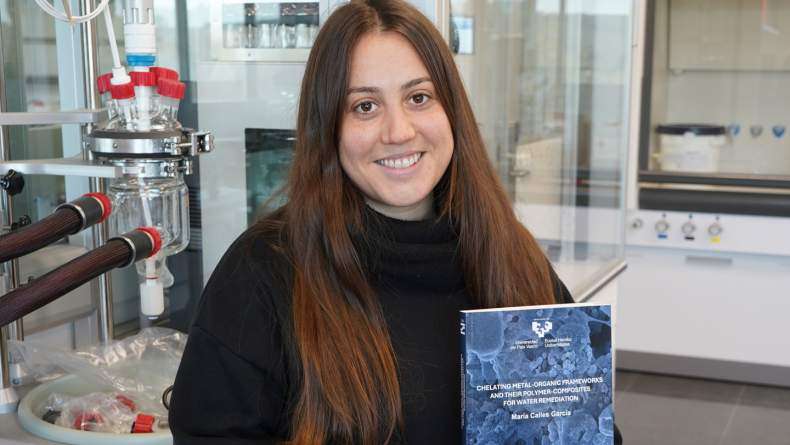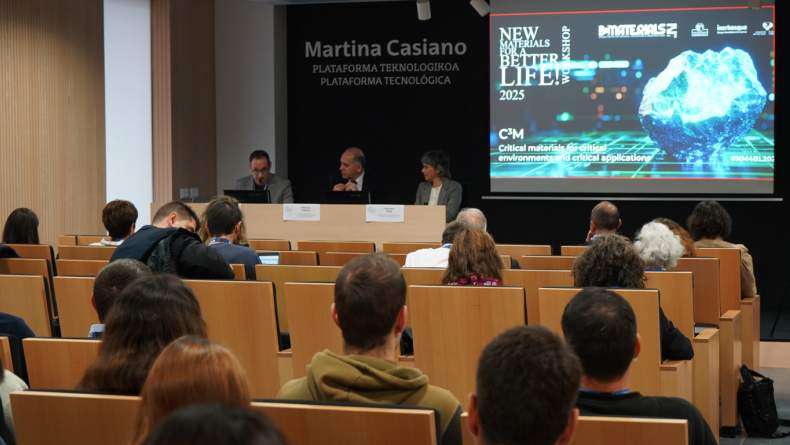BCMaterials Fortnightly Seminars #45

SARA DEL HOYO
(UPV/EHU)
PREPARATION OF POLYMER MULTILAYER SYSTEMS TO OPTIMIZE BIOMEDICAL DEVICES
There is an increasing demand of new processable biomaterials, capable of controlling cell adhesion and meeting the broad range of specific requirements needed in the development of tailored surfaces for biomedical applications. Polyethylene terephthalate (PET), a hydrophobic polymer used in traditional biomedical devices and as substrate for in vitro studies, is proposed to be modified by layer by layer assembly of polysaccharides in order to inhibit polymer–bacteria interaction and improve biological properties. This research deals with the development of a polymeric multilayer that strategically combines adhesion resistance, bacterial contact killing properties and biocides modulated releasing in order to get multiply enhanced antibacterial surfaces for biomedical applications.
ANABEL PEREZ
(BCMaterials)
HIGH TEMPERATURE FERROMAGNETIC SHAPE MEMORY ALLOYS
Magnetically driven effects in Ni-Mn-Ga have been extensively studying during past decades. This alloys exhibit a coupling between magnetic order and crystallographic twin structure which allows the magnetic shape memory effect (MSM). It is shown that the mechanism of this effect is based on the field-induced rearrangement of twin variants in the martensitic state realized by the twin boundary motion. Up to now, Ni–Mn–Ga alloys exhibit the highest MSM effect up to 10%, which make them suitable materials for practical application as sensors and actuators. However, there are still some issues and challenges, as the improvement of mechanical properties, the reduce of twinning stress and actuation field as well as the increase of operational temperature range. Ni-Mn-Ga alloys properties have been shown to be very sensitive to composition and to additives. Previous studies have shown that the effect of doping with a fourth or/and fifth element such as Cu, Co and Fe, drastically change the martensitic transformation temperatures, TM and magnetic properties of the alloy as curie temperature, TC. These temperatures are fundamental parameters in terms of application, as MSM effect only takes places in the ferromagnetic martensitic state. Although if some works have been focused on increase TM and TC by simultaneously doping with Co and Cu or Fe and Co, any value above 80ºC for TM and TC in the same alloy have been achieve. Our goal is to study the influence of the simultaneous addition of the 3 elements in the Ni50-xCoxMn25-yFeyGa25-zCuz system in order to achieve values of TM > 100ºC and TC >150ºC.
Related news
María Calles, New Doctor of BCMaterials
We would like to congratulate María Calles García for obtaining her PhDs in Materials Science and Technology from the UPV/EHU. On December 4 made a brilliant defense of her thesis titled ‘Chelating…Invited Talk with Barcelona Microelectronics Institute’s researchers (December 3)
On December 3 at 12:00 PM, in the Martina Casiano Auditorium in Leioa, BCMaterials will host senior researchers Antón Guimerà and Xavier Illa from the Barcelona Microelectronics Institute (IMB-CNM,…Invited Talk by Liu Yao on Lithium-Metal Batteries (December 2)
Next Monday, December 2, Liu Yao, professor at the Shanghai Institute of Applied Physics, will give an invited lecture at BCMaterials entitled ‘Li-Metal Batteries: From Liquid to Solid-State’. The…Success of BCMaterials’ Annual Workshop on Critical Materials
The 2025 edition of BCMaterials’ annual workshop gathered nearly one hundred participants on November 19 in Leioa to review the latest advances and discuss critical materials, their applications, and…



